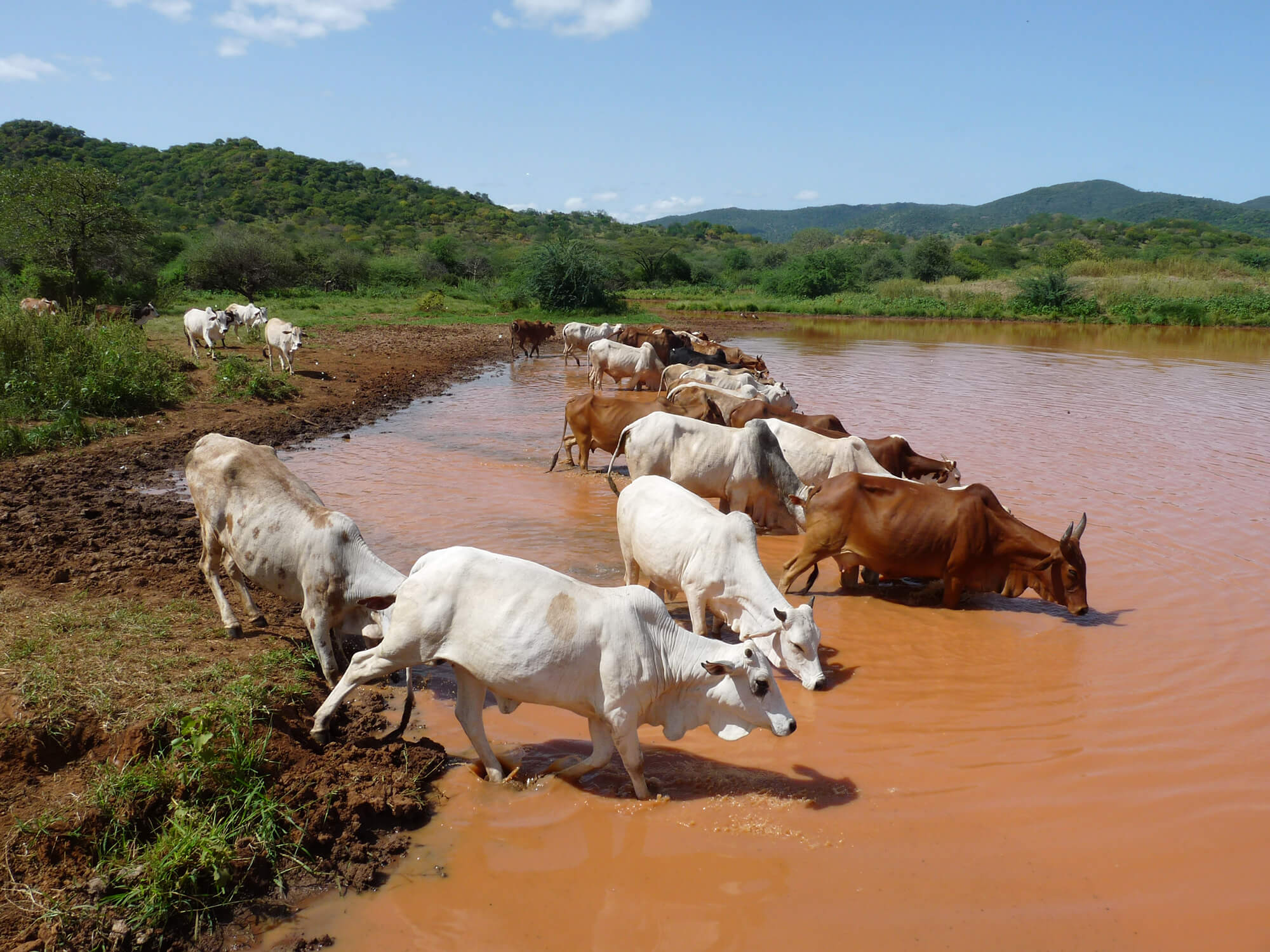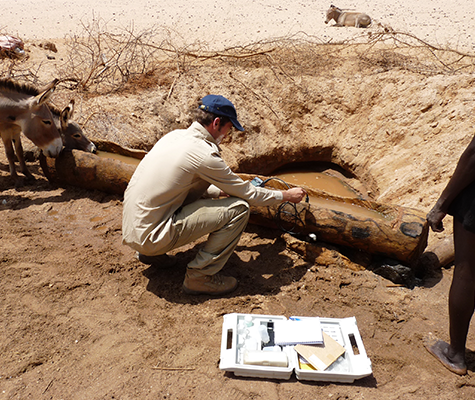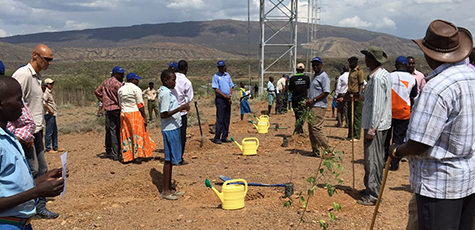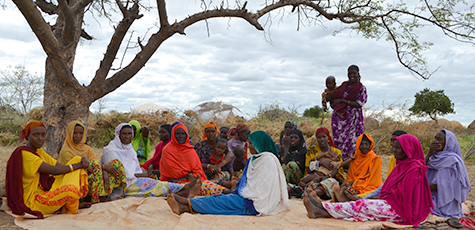
KENYA RAPIDSustainable strategies knowledge base for water management
What is the best way to manage the scarce water we have at our disposal? What are our options if we want to benefit from precipitation? These are the central questions of the Kenya RAPID programme that was launched early in 2016 by Aqua for All and the Millennium Water Alliance. Acacia Water supports the Kenya Resilient Arid Lands Partnership for Integrated Development (Kenya RAPID) programme in answering these questions.
‘Water is extremely scarce in the project area in North Kenya,’ according to Lieselotte Tolk. ‘In this area, it is of crucial importance to make the right decisions when it comes to managing the limited supply of water. The pressure on water availability is continuously increasing due to strong population growth and climate change, while water is in short supply as it is. That is why it is important to make strategic decisions, balancing the most effective way to use this water.’
‘The responsibility for water management has recently shifted from the national government to the provincial government. We support the provinces in this project by providing insight into the water management system in order to develop a practical and sustainable water management policy.’ | |
Combining a large number of data sources into a single knowledge baseWithin the project, Acacia is the party who mainly contributes the knowledge based on which considerations can be made and decisions can be taken. ‘We support the decision-making process. We make sure that a proper knowledge base is available. This enables those in charge to discuss the actual character and features of the area and to decide on realistic sustainable strategies. The basis is formed by pooling large numbers of data from a variety of different sources and combining them; satellite data, for instance, and geological and demographic data. Discussions with local authorities are yet another rich source of valuable, be it sometimes anecdotal information. We use this information as a basis for discussions and to explore the possible impact of the various strategies on the area.’ |
|
Central water supply versus decentralized measuresThe use of deep groundwater is often seen as a solution. ‘In this area, the groundwater can be a good source, but its quality is not always up to the mark and the aquifers are not always sufficiently recharged. Furthermore, deep groundwater wells are rather expensive measures,’ according to Tolk. ‘For this reason, it is interesting to explore multiple small-scale measures as well, distributed over a wider area. It is not infrequent that problems arise around deep central wells, you see. They attract roaming nomads from all around the area. And if there is not enough grassland, pastures are overgrazed on a large scale, causing deterioration and erosion. Moreover, competition between various nomadic tribes may lead to conflicts. A smart distribution of water sources may help to control and spread the pressure on the area. The power of leveraging a combination of deep groundwater use and decentralized, local measures is that a large number of sites will have access to water. This will enable further development of the area.’ | |
| Recharge, Retention and Reuse (3R)Rainwater ends up in the groundwater only to a limited extent. ‘Part of it is lost through evaporation,’ Tolk explained. ‘We want to prevent this and make the water available for consumption instead, also in the dry season. The various options to achieve this can be captured by the umbrella notion of Recharge, Retention and Reuse (3R). Rainwater, for instance, can be harvested to recharge shallow groundwater, or stored in sand dams. This will create an additional, useful source of water besides the deep groundwater wells. Even though these areas receive limited quantities of precipitation, it is still – especially in years of average rainfall – amply sufficient to meet the drinking water demands of humans and livestock. The challenge in this respect is to ensure that the water is accessible at the right time and in the right location. Another important aspect is the water demand for vegetation as forage for livestock. This, too, requires water retention in the area, as well as strategic balancing.’ |
Enshrining strategy in policy documentsIn this project, strategic policies are developed in conjunction with the provinces and the water authorities. These are enshrined in local policy documents. The Kenyan decision-making structure furthermore dictates that the villagers – the communities – are the ones who decide which strategy will be adopted and pursued. Tolk stated: ‘They have the final say in what will be developed. No matter how viable and wonderful a solution a sand dam may be, if they do not believe in it, it will not happen. It is up to us to tell them the story in unambiguous terms to ensure that they have the courage to decide in favour of a non-traditional solution. For us, it is essential that a possible solution is actually embraced by the end-user. Rather than focusing merely on the solution that will achieve our objective, we also focus on how to get the job done.’
In view of the dimensions of the area, it is impossible for the Acacia staff to meet everyone in person. ‘That is why we train local authority staff and develop tools that can be used intuitively. One of these tools, for example, is a schematic model that immediately visualizes water needs on the one hand, and the estimated quantities of water available from various sources in a certain location on the other hand. This offers a concrete basis for discussion.’
Want to know more about this project? | |
Van Hogendorpplein 4 |
|---|
Location
Service
Newsletter
Search
IWRM & Catchment management | Strategical assessments | Urban planning | Innovative techniques | System specific approach





